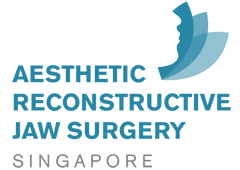Share this
Total teeth replacement with dental implants
on March 24, 2015

Dentists are trained to save teeth. Much of dental school curriculum is focussed on restoring decayed teeth and treating gum diseases. The objective is to keep the patient's natural teeth for as long as possible. Indeed, advances in dental science has enabled many dental patients to keep their teeth till the day they die. Old age is no longer associated with toothlessness, at least not in a developed country like Singapore. However, despite fluoridation of our water supply and easy access of dental care, there are many people still losing their teeth through tooth decay, gum disease. Some are genetically predisposed while others are negligent about their oral health. While complex restorative procedures may be performed to salvage damaged teeth, there come a stage whereby extracting the teeth and replacing with a dental implant becomes a more practical option.
Every once in a while, I see a patient who after many years of avoiding the dentist, managed to muster enough courage to bring himself to the dentist's chair. When such a patient opens his mouth, there are usually a whole lot of dental work needed, many of which has rather uncertain prognosis even with the most heroic dental restorative procedures. For such a patient, there are two approaches. The usual approach is to try to restore as many of his teeth as possible and extracting only those that are beyond salvage. Thereafter, the missing teeth can be replaced with dental implants. This would be the ideal textbook treatment plan. However, it is not always possible to do this with a patient who has dental phobia. Furthermore the uncertain prognosis will usually make compliance even worse. For this group of patients, extracting all the remaining teeth and replacing with prosthetic teeth ie total teeth replacement, may be the more practical option.
To explain these two approaches to patients, I use the analogy of reconstruction of an old house. Imagine you inherited an old and dilapidated house. Some parts of the house is still in livable condition but most of the house is not. You can choose keep the structure of the house and renovate the rundown parts or you can tear the house down and rebuild from scratch. Much of the pros and cons are similar. With renovation, you can't be sure how bad the damage is until you start. Preserving the structure also means living with whatever deficiency that is pre-existing. At the end of the day, it may be the more costly option.
Total teeth replacement may seem to run counter to the age old dictum of saving teeth as it involves removing teeth that may be salvageable and maybe even a few that are perfectly fine. It is not something that I recommend to every patient but for some, it is the better option. Let's look at who are the ones who may benefit from such an approach.
1. Dental phobia. Patients who have dental phobia will have great difficulty subjecting themselves to a complicated restorative plan which may include multiple root canal treatments, crowns, gum surgery and treatment, orthodontic alignment and oral surgical procedures. Such treatment usually have to be done in phases, with the subsequent phases coming on only when the earlier phases of treatment are successful. For example, gum treatment usually need to start first and after the gum condition has stabilized, those teeth that are still loose or trapping bacteria in gum pockets will need to be extracted. Thereafter, some teeth may need root canal treatment followed by crowns. Some of these teeth may also need gum surgery to expose more of the tooth before they can be treated. There is a certain degree of uncertainty in such plans as the depth of the caries cannot always be accurately diagnosed prior to starting treatment. The patient's response to gum treatment is also not predictable. For these patients, it is best to have a treatment that has more certainty.
2. Patient with no time. As mentioned above, a comprehensive restorative treatment plan is very time consuming and it requires frequent long visits to the dentist. Removing all teeth and replacing with dental implants will require less time.
3. Healthy teeth that are non-functional. Under normal circumstances, healthy teeth should not be removed. However, some patients may have lost most of their teeth except for a few. These few remaining teeth may be healthy but are positioned in such a way as to prevent the proper replacement of the missing teeth with a prosthesis. In such cases, it is better to remove these teeth to make way for a better set of false teeth.
4. Poor oral hygiene maintenance. Teeth that have loss of bone support due to gum disease requires special care to maintain them in good condition. This is often a challenge to many patients who may either be lacking in the dexterity to use dental floss and other cleansing aids or they may be not compliant with the rigourous oral hygiene regime prescribed by their dentist. Total replacement of teeth with an implant-supported prosthesis can facilitate oral hygiene as the prosthesis can be designed to be easily cleansable.
Once a thorough physical examination and xrays are done and the circumstances of the patient indicate that total teeth replacement is a beneficial option for this patient, treatment can commence. First, we pre-fabricate a set of temporary denture based on extraction of all teeth. Once that is ready, the patient comes back for surgery which consists of removing all teeth under intravenous sedation. In the same sitting, with the patient still sedated, 4-8 implants are placed in each jaw. The pre-fabricated temporary denture is fitted over the implants and the patient goes home with a new set of teeth. Two months later, the temporary denture is removed and the final prosthesis is fitted. This is assuming that the patient has sufficient bone for implants and no bone grafting is needed. This approach signficantly reduces the number of procedures needed and the surgical part of the plan can be completed in one session under intravenous sedation. Subsequent restoration of the implants with a dental prosthesis is painless and does not even require local anesthesia.
For the right patient, total teeth replacement is a cost and time effective treatment modality. It is not for everybody but for the right patient it significantly reduces treatment time and offers more predictability in outcome. If you are thinking that this is for you, you'll need to have a good discussion with your dentist to see if it is suitable for you.
Share this
- Jaw Surgery (93)
- Dental Implants Singapore (90)
- Orthognathic Surgery (48)
- Replacing Missing Teeth (26)
- Missing Teeth Options (23)
- Underbite (23)
- Bone Grafting (21)
- Costs (18)
- Facial Aesthetics (18)
- Aesthetics (17)
- dental implants (16)
- corrective jaw surgery (15)
- BOTOX (11)
- Dermal Fillers (11)
- Wisdom teeth (10)
- Fixed Implant Dentures (8)
- Loose Dentures Singapore (6)
- Medisave (6)
- sleep apnea (6)
- Braces (5)
- Dental Pain (5)
- Dentures in Singapore (5)
- Loose Teeth (5)
- Tooth Extraction (5)
- jaw deformities (5)
- bimax (4)
- bone graft (4)
- maxillomandibular advancement (4)
- all-on-4 (3)
- bimaxillary protrusion (3)
- chin implant (3)
- facial asymmetry (3)
- full mouth dental implants (3)
- genioplasty (3)
- immediate implant (3)
- removal of an integrated dental implant (3)
- third molars (3)
- wisdom tooth surgery (3)
- My Dentures Don't Fit (2)
- VME (2)
- bone graft healing (2)
- distraction osteogenesis (2)
- medical tourism (2)
- obstructive sleep apnea (2)
- orthodontics (2)
- plastic surgery (2)
- CT guided dental implants (1)
- Double jaw surgery (1)
- Invisalign (1)
- Periodontal Disease (1)
- Permanent Dentures Singapore (1)
- before and after photos (1)
- facial trauma (1)
- fractured dental implant (1)
- oral appliance therapy (1)
- root canal treatment (1)
- veneers (1)
- vertical maxillary excess (1)
- September 2019 (2)
- July 2019 (2)
- May 2019 (2)
- August 2018 (1)
- October 2017 (1)
- September 2017 (2)
- August 2017 (1)
- June 2017 (2)
- May 2017 (4)
- April 2017 (1)
- March 2017 (1)
- February 2017 (3)
- January 2017 (3)
- December 2016 (1)
- November 2016 (2)
- October 2016 (4)
- September 2016 (9)
- August 2016 (5)
- July 2016 (11)
- June 2016 (14)
- May 2016 (6)
- April 2016 (2)
- March 2016 (1)
- January 2016 (7)
- December 2015 (10)
- November 2015 (4)
- October 2015 (9)
- September 2015 (7)
- August 2015 (1)
- July 2015 (6)
- June 2015 (3)
- May 2015 (7)
- April 2015 (5)
- March 2015 (8)
- January 2015 (5)
- December 2014 (7)
- November 2014 (7)
- October 2014 (6)
- September 2014 (8)
- August 2014 (5)
- July 2014 (7)
- June 2014 (8)
- May 2014 (9)
- April 2014 (10)
- March 2014 (6)
- February 2014 (8)
- January 2014 (3)
Subscribe by email
Email subscription




No Comments Yet
Let us know what you think